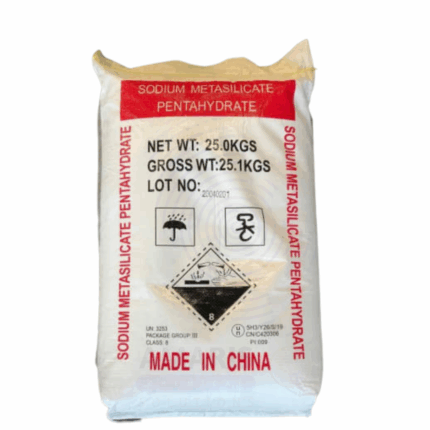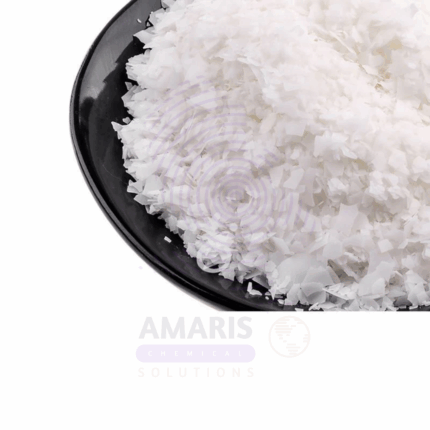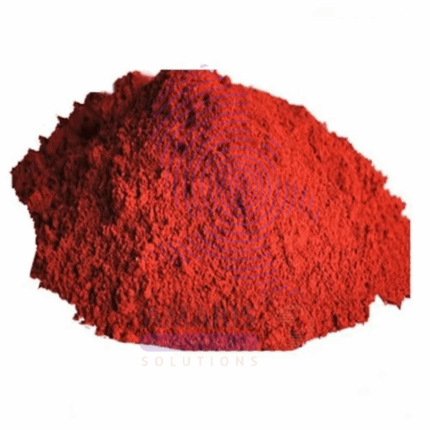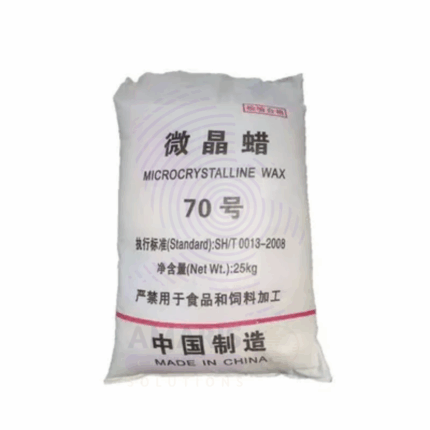Back to products


Naphthalene Balls Extra Pure
$ 20.09 Original price was: $ 20.09.$ 19.98Current price is: $ 19.98.
Sodium Methyl Paraben
Whatsapp Order
Sodium Methyl Paraben is the sodium salt of methylparaben, a widely used preservative in cosmetics, pharmaceuticals, and food. It is a white, odorless, crystalline powder that is water-soluble and effective against a broad spectrum of bacteria, molds, and yeasts. As a paraben derivative, it helps prevent microbial contamination and extends shelf life. It is often preferred over methylparaben in formulations where water solubility is required.
Categories: Analytical Reagents, COSMETIC AND PERSONAL CARE CHEMICALS, Excipients, FOOD AND BEVERAGE CHEMICALS, LABORATORY CHEMICALS, PHARMACEUTICAL CHEMICALS, Preservatives, Preservatives(food)
Tags: Antimicrobial Agent, Methylparaben Sodium Salt, Pharmaceutical formulations, Preservative, Sodium Methylparaben
Description
Table of Contents
Toggle
Sodium Methyl Paraben
Primary Uses
- Pharmaceuticals
- Used as an antimicrobial preservative in oral and topical medicinal formulations.
- Stabilizes syrups, suspensions, creams, and eye drops by preventing microbial growth.
- Cosmetics & Personal Care
- Added to lotions, creams, shampoos, and deodorants to inhibit bacterial and fungal contamination.
- Ensures product safety and longevity in water-based personal care items.
- Food Industry
- Utilized in beverages, sauces, and processed foods as a preservative to control spoilage.
- Helps extend shelf life by inhibiting yeast and mold growth (where permitted by food regulations).
Secondary Uses
- Veterinary Products
- Used in animal pharmaceuticals and topical veterinary treatments as a preservative.
- Laboratory & Research Chemicals
- Acts as a reference or control preservative in microbiological and pharmaceutical research.
- Textile & Leather Processing
- Occasionally used in water-based treatments where preservation against microbial contamination is needed.
PRODUCT KEY FEATURES
Basic Identification Attributes
- Chemical Name (IUPAC): Sodium 4-(methoxycarbonyl)phenolate
- Common/Trade Name: Sodium Methyl Paraben
- CAS Number: 5026-62-0
- HS Code: 2918.23.00
- Synonyms: Methylparaben sodium salt; Sodium methyl 4-hydroxybenzoate
Physical & Chemical Properties
- Physical State: Solid (crystalline powder)
- Color & Odor: White, odorless
- Solubility: Highly soluble in water and alcohol
- pH (1% solution): Approx. 9.5–10.5
- Melting Point: ~125–128°C (decomposes)
- Stability: Stable under normal storage conditions
Safety & Hazard Attributes
- GHS Classification: Not classified as hazardous under normal conditions
- Toxicity: Low; considered safe at approved concentrations in food and personal care products
- Exposure Limits: Follow GMP and cosmetic/pharmaceutical regulations
- Allergies: Rare cases of skin irritation or allergic response in sensitive individuals
Storage & Handling Attributes
- Storage Conditions: Store in a cool, dry place, away from light and moisture
- Container Type: Food-grade or pharmaceutical-grade plastic containers or fiber drums
- Shelf Life: Typically 2–3 years under recommended conditions
- Handling Precautions: Avoid inhalation of dust; use gloves and eye protection when handling in bulk
Regulatory & Compliance Attributes
- Complies with relevant pharmacopeial standards (e.g., USP, BP, EP)
- Approved for use by FDA, EFSA, and other regulatory authorities within defined limits
- Listed under international chemical inventories (REACH, TSCA, AICS)
- Subject to concentration limits for use in cosmetics and foods as per regional legislation
- Requires appropriate labeling when used in consumer products
- Manufactured in accordance with cGMP and ISO quality systems
Environmental & Health Impact
- Biodegradability: Readily biodegradable in natural environments
- Ecotoxicity: Low environmental impact at permitted usage levels
- Bioaccumulation: Negligible due to rapid breakdown and low persistence
SAFETY HANDLING PRECAUTIONS
Safety Handling Precautions
- PPE Required: Gloves, goggles, lab coat or protective clothing
- Handling Guidelines: Avoid contact with eyes and inhalation of powder
- Storage Measures: Keep tightly sealed in original containers; avoid exposure to heat or humidity
First Aid Measures
- Inhalation: Move to fresh air; seek medical attention if respiratory symptoms develop
- Skin Contact: Wash with soap and water; discontinue use if irritation occurs
- Eye Contact: Rinse with plenty of water; seek medical attention if irritation persists
- Ingestion: Rinse mouth with water; consult a healthcare provider if necessary
Firefighting Measures
- Fire Hazards: Non-flammable but may decompose at high temperatures
- Extinguishing Media: Use water spray, dry chemical, CO₂, or foam
- Special Precautions: Use self-contained breathing apparatus in enclosed areas
- Hazardous Combustion Products: May emit carbon oxides on combustion
Related products
Almond Wax
Almond Wax is a natural, plant-based wax derived from the hydrogenation of almond oil (Prunus amygdalus dulcis). It is a creamy to white, semi-solid wax with a mild, nutty scent and excellent emollient properties. Almond Wax is rich in fatty acids and has a smooth, soft texture, making it ideal for use in cosmetic, personal care, and candle formulations.
Due to its gentle consistency, skin-friendly profile, and moisturizing capabilities, Almond Wax is widely used in body butters, balms, lip care products, massage bars, and artisan soaps. It functions as a natural alternative to petroleum-based waxes and provides structure, viscosity, and glide to formulations. It also finds application in soft wax blends for natural candle products.
Bright Red Dye
Bright Red Dye is a high-strength, water-soluble synthetic dye solution designed for vibrant red coloration across various industrial and consumer products. With 20% active dye content, it offers excellent color intensity, easy dispersibility, and compatibility with a wide range of aqueous systems. This versatile dye is widely used in textiles, paper, personal care products, and household cleaning formulations.
Methyl Salicylate BP
Methyl Salicylate BP is a clear, colorless to pale yellow oily liquid with a characteristic strong, sweet, and minty odor. It is an organic ester commonly used for its analgesic, anti-inflammatory, and flavoring properties. Methyl Salicylate is widely used in pharmaceutical preparations, topical pain relief products, cosmetics, and as a fragrance ingredient.
Methylene Glycol
Product Description
Methylene Glycol is a chemical compound formed by the reversible reaction of formaldehyde with water. It exists in equilibrium with formaldehyde in aqueous solutions and is commonly used as a disinfectant, preservative, and industrial biocide. Due to its antimicrobial properties, it is widely applied in water treatment, cosmetics, and embalming fluids.Micro crystalline Wax
MonoPropylene Glycol ( MPG)
Mono Propylene Glycol (MPG) is a clear, colorless, odorless, and slightly viscous liquid commonly used as a solvent, humectant, and antifreeze agent. It exhibits excellent moisture retention, low volatility, and high boiling point, making it suitable for a wide range of industrial, food, pharmaceutical, and cosmetic applications. MPG is valued for its low toxicity and biodegradability.


 Preservatives(food)
Preservatives(food) Flavor Enhancers
Flavor Enhancers Acidulants
Acidulants Sweeteners
Sweeteners Antioxidants
Antioxidants Colorants(food)
Colorants(food) Nutraceutical Ingredients (food)
Nutraceutical Ingredients (food) Nutrient Supplements
Nutrient Supplements Emulsifiers
Emulsifiers
 Collectors
Collectors Dust Suppressants
Dust Suppressants Explosives and Blasting Agents
Explosives and Blasting Agents Flocculants and Coagulants
Flocculants and Coagulants Frothers
Frothers Leaching Agents
Leaching Agents pH Modifiers
pH Modifiers Precious Metal Extraction Agents
Precious Metal Extraction Agents
 Antioxidants(plastic)
Antioxidants(plastic) Colorants (Pigments, Dyes)
Colorants (Pigments, Dyes) Fillers and Reinforcements
Fillers and Reinforcements Flame Retardants
Flame Retardants Monomers
Monomers Plasticizers
Plasticizers Polymerization Initiators
Polymerization Initiators Stabilizers (UV, Heat)
Stabilizers (UV, Heat)
 Antifoaming Agents
Antifoaming Agents Chelating Agents
Chelating Agents Coagulants and Flocculants
Coagulants and Flocculants Corrosion Inhibitors
Corrosion Inhibitors Disinfectants and Biocides
Disinfectants and Biocides Oxidizing Agents
Oxidizing Agents pH Adjusters
pH Adjusters Scale Inhibitors( water)
Scale Inhibitors( water)
 Antioxidants(cosmetic)
Antioxidants(cosmetic) Emollients
Emollients Fragrances and Essential Oils
Fragrances and Essential Oils Humectants
Humectants Preservatives
Preservatives Surfactants(cosmetic)
Surfactants(cosmetic) Thickeners
Thickeners UV Filters
UV Filters
 Fertilizers
Fertilizers Soil Conditioners
Soil Conditioners Plant Growth Regulators
Plant Growth Regulators Animal Feed Additives
Animal Feed Additives Biostimulants
Biostimulants Pesticides (Herbicides, Insecticides, Fungicides)
Pesticides (Herbicides, Insecticides, Fungicides)
 Active Pharmaceutical Ingredients (APIs)
Active Pharmaceutical Ingredients (APIs) Excipients
Excipients Solvents(pharmaceutical)
Solvents(pharmaceutical) Antibiotics
Antibiotics Antiseptics and Disinfectants
Antiseptics and Disinfectants Vaccine Adjuvants
Vaccine Adjuvants Nutraceutical Ingredients (pharmaceutical)
Nutraceutical Ingredients (pharmaceutical) Analgesics & Antipyretics
Analgesics & Antipyretics
 Analytical Reagents
Analytical Reagents Solvents(lab)
Solvents(lab) Chromatography Chemicals
Chromatography Chemicals Spectroscopy Reagents
Spectroscopy Reagents microbiology-and-cell-culture-reagents
microbiology-and-cell-culture-reagents Molecular Biology Reagents
Molecular Biology Reagents Biochemical Reagents
Biochemical Reagents Inorganic and Organic Standards
Inorganic and Organic Standards Laboratory Safety Chemicals
Laboratory Safety Chemicals Specialty Laboratory Chemicals(Special Laboratory Equipment)
Specialty Laboratory Chemicals(Special Laboratory Equipment)
 Demulsifiers
Demulsifiers Hydraulic Fracturing Fluids
Hydraulic Fracturing Fluids Scale Inhibitors(oil)
Scale Inhibitors(oil) Surfactants(oil)
Surfactants(oil) Drilling Fluids
Drilling Fluids
 Dyes and Pigments
Dyes and Pigments Bleaching Agents
Bleaching Agents Softening Agents
Softening Agents Finishing Agents
Finishing Agents Antistatic Agents
Antistatic Agents
 Admixtures
Admixtures Waterproofing Agents
Waterproofing Agents Sealants and Adhesives
Sealants and Adhesives Curing Compounds
Curing Compounds Concrete Repair Chemicals
Concrete Repair Chemicals Anti-Corrosion Coatings
Anti-Corrosion Coatings
 Surfactants(cleaning)
Surfactants(cleaning) Builders
Builders Enzymes
Enzymes Solvents (Cleaning)
Solvents (Cleaning) Fragrances
Fragrances
 Electronic Chemicals
Electronic Chemicals Catalysts
Catalysts Lubricants
Lubricants Photographic Chemicals
Photographic Chemicals Refrigerants
Refrigerants Automotive chemicals
Automotive chemicals Pyrotechnic Chemicals
Pyrotechnic Chemicals
 Biodegradable Surfactants
Biodegradable Surfactants Bio-based Solvents
Bio-based Solvents Renewable Polymers
Renewable Polymers Carbon Capture Chemicals
Carbon Capture Chemicals Wastewater Treatment Chemicals
Wastewater Treatment Chemicals
 Pigments
Pigments Solvents(paint)
Solvents(paint) Specialty Coatings
Specialty Coatings Binders/Resins
Binders/Resins Additives
Additives Driers
Driers Anti-Corrosion Agents
Anti-Corrosion Agents Functional Coatings
Functional Coatings Application-Specific Coatings
Application-Specific Coatings
 Fresh Herbs
Fresh Herbs Ground Spices
Ground Spices Whole Spices
Whole Spices Spice Blends
Spice Blends Dried Herbs
Dried Herbs
 Leavening Agents
Leavening Agents Dough Conditioners
Dough Conditioners Flour Treatments
Flour Treatments Fat Replacers
Fat Replacers Decoratives
Decoratives Preservatives(baking)
Preservatives(baking)
 Plasticizers & Softeners
Plasticizers & Softeners Reinforcing Agents
Reinforcing Agents Adhesion Promoters
Adhesion Promoters Vulcanizing Agents
Vulcanizing Agents Antidegradants
Antidegradants Blowing Agents
Blowing Agents Fillers & Extenders
Fillers & Extenders Accelerators & Retarders
Accelerators & Retarders

























